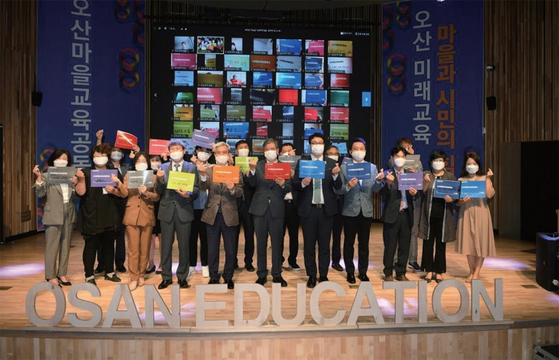Subscribe for our News

Implementation of a systematic approach to innovative education in the city of Osan
The small town of Osan in Gyeonggi Province (S. Korea) has been conducting a unique experiment in the field of innovative education for 10 years. An organic system of cooperation involving all citizens is the key to its success.
Ten years ago, the Mayor of Osan Gwak Sang-Wook saw in education a way to make the city, where there was a constant outflow of population, competitive. The experiment began in 2011 with the creation of an innovative educational district, which included Osan and five other cities, including Anyang.
In order to collect successful cases in the implementation of innovations in education, Gwak Sang-Wook visited Finland, Denmark, Sweden, Northern Europe, the United States, and Japan. A creative curriculum has been developed with an emphasis on supporting extracurricular courses and lifelong learning. The main goal of innovative education was to create a happy learning environment for children.
The next stage of the experiment was the formation of a local educational community. And now there has already been created a unique educational model of the city due to the merger of innovative schools and extracurricular courses. From 2021, this model will form the basis of a stable innovation project for the next 5 years.
The city has played an important role in developing programs that connect schools and citizens through the first innovative education support center in the country.
In 2011, the experimental training program "School of Civic Participation" was presented. The Mayor's office and the city council, as well as environmental, historical and cultural objects of the district are used for teaching "outside" the classroom. Citizens and parents with experience and knowledge in the relevant field actively work as teachers, i.e. directly conduct classes. And now teaching creative experience is included in the regular curriculum.
Following the School of Civic Participation, programs have been developed that complement public education and provide young people with the opportunity to gain a variety of practical experience.
In 2013, swimming training was launched as a regular course in the third grade of elementary school. The program, which involves mastering the techniques of mobility and safety of students, covers schools, organizations and volunteer parents in the Osan district. The swimmers of the Sports Association and the Swimming Federation of Korea contribute.
Another example is a youth orchestra created to give children the opportunity to learn to play at least one instrument. And now there are three orchestras.
Innovative education includes a program of various courses for everyone who wants to complete lifelong learning. If more than five residents of the Osan district gather and apply for training, the instructor visits them and teaches them for free. The popularity of the courses and the willingness of citizens to study led to the fact that in 2012 the Ministry of Oceans and Fisheries of South Korea chose this program as a project to increase the viability of cities and support national spending.
So what did the introduction of innovative education give the city as a result? The biggest change that has happened is that Osan has turned into a city where people come. The population has increased by 43% from 160,000 in 2010 to 230,000 in 2021. The satisfaction of citizens is growing, as well as the general emotional state. Currently, the average age of Osan residents is 37.7 years, which makes it the best young city in the country for many years.
Link:

